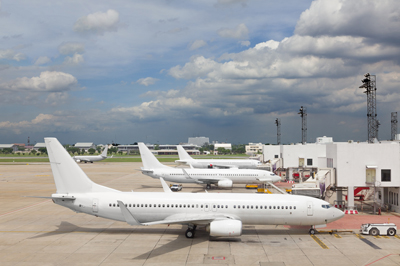
Ryanair’s recent $22 billion order of 200 Boeing’s 737MAX aircraft is a clear sign that the growth of the global fleet isn’t going to slow down anytime soon. In the meantime, TeamSAI predicts that the global MRO-related spending can be expected to increase at a rate of 3.3% annually until 2022. Following an intense period of numerous mergers and acquisitions the number of players in the segment is shrinking and the remaining providers are forced to focus on their planning and data-sharing efforts in order to deal with the growing workload.
Various statistical data indicates that reducing MRO expenditures by as few as 10% could almost double a carrier’s profits. However, despite numerous efficiency benefits stemming from an integrated approach to maintenance operations, its adoption in the aviation industry to date has been rather slow.
Luckily, the industry players’ attitude towards maintenance planning, as well as supply chain execution and management is starting to change for the better. A recent survey performed by PwC revealed that maintenance organizations which had decided to change their attitude towards data-sharing (approximately 25% of all market players), were significantly outperforming their competitors. For instance, their internal shops generated 14% better turnaround times than the industry average. As for the on-time delivery of spare parts, the compliance observed in mature organizations was 72%, while the industry median is 68%.
“Up until now, the relationship among carriers, MROs and parts suppliers in the aviation industry has been difficult to say the least. Thus, the lack of trust shared by different industry players has been one of the most important obstacles when it comes to improving maintenance related processes,” shares Zilvinas Sadauskas, the CEO of Locatory.com “Moreover, many organizations are simply reluctant to share relevant information, which they consider an advantage in competition. However, those who do manage to step out of their comfort zone, usually don’t have to wait long in order to start enjoying improved results.”
difficult to say the least. Thus, the lack of trust shared by different industry players has been one of the most important obstacles when it comes to improving maintenance related processes,” shares Zilvinas Sadauskas, the CEO of Locatory.com “Moreover, many organizations are simply reluctant to share relevant information, which they consider an advantage in competition. However, those who do manage to step out of their comfort zone, usually don’t have to wait long in order to start enjoying improved results.”
According to AWIN, up to 39% of airlines across the globe are planning to replace their ERP systems, while about 58% are expecting to enhance them over the next 5 years. Meanwhile, based on the results of a recent PwC’s survey, one of the global carriers, which has started sharing maintenance plans across all functional areas, has been able to reduce part delivery delays by 40%, while cutting the inventory by 50 million items.
According to the CEO of Locatory.com, if one is seeking better lead times, enhanced quality and reduced costs, communication between aircraft operators, MROs and spare parts suppliers needs to evolve. Ultimately, the more information is shared between the parties involved in the maintenance process, the greater the possibility that the relevant support operations will become less chaotic and more consistent. The first area to demonstrate the benefits of such an approach is the supply chain, where one should rather quickly observe increasing efficiency and part availability.
“Naturally, implementing an integrated approach in the aftermarket support can be way more complex than in manufacturing, where the strategy is applied widely, since different MRO scenarios are significantly more difficult to predict. Nevertheless, the benefits of such a decision are more than rewarding,” says Zilvinas Sadauskas. “However, pursuing an integrated system requires a respective change in attitude towards many processes. It is only by addressing those issues that the challenges integrated approach presents can be justified.”





